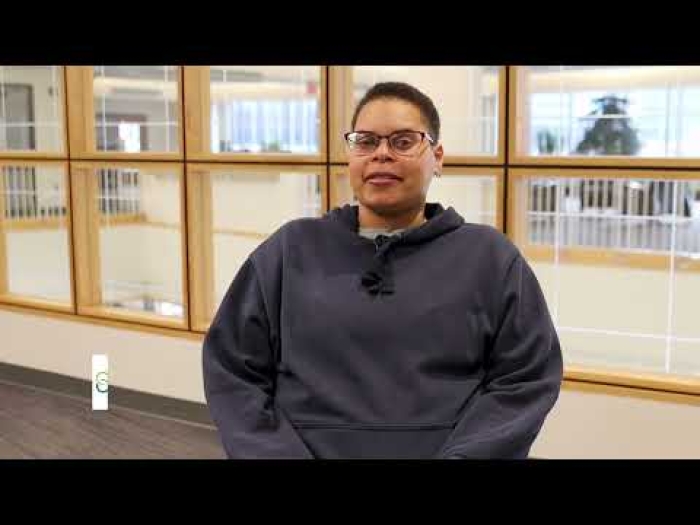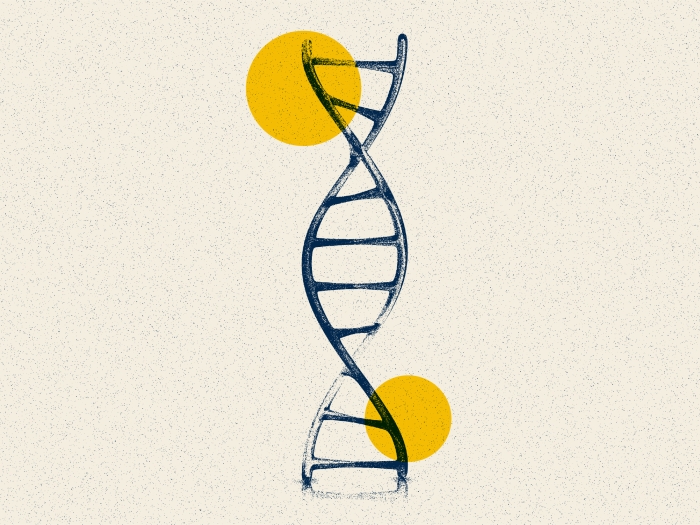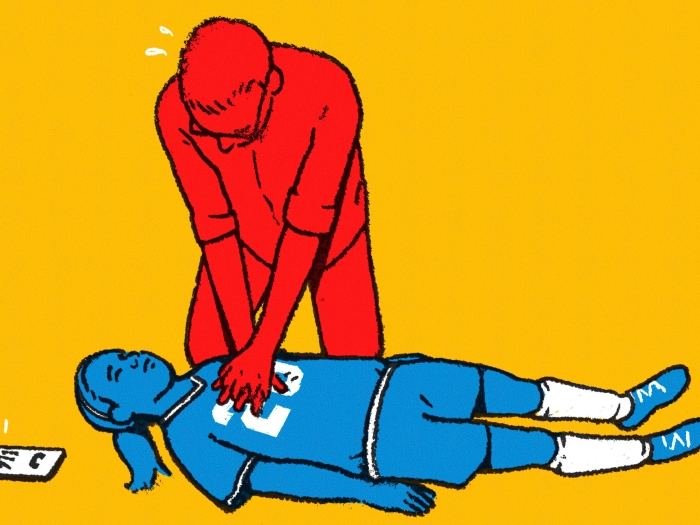Surgery for an aneurysm led to the discovery of a second heart condition, prompting the patient to educate his large extended family.
7:00 AM
Author |

Chris Hummel views golf as much more than a game.
"I think golf is the story of life," the 80-year-old says. "Sometimes, you hit a good one — and then you hit a bad one every once in a while."
MORE FROM MICHIGAN: Sign up for our weekly newsletter
The latter event occurred in June 2016 when Hummel began to feel pain in his arm and shoulder, signs he thought were suggestive of a heart attack.
He went to a doctor near his hometown of Gladwin, Michigan, where a thorough checkup and echocardiogram revealed a different diagnosis: an ascending aortic aneurysm.
The condition is defined by an enlargement of the beginning part of the aorta, which is the major artery of the body and arises from the heart. Just like any type of aneurysm, an oversized one can rupture or tear, both life-threatening problems.
Aortic aneurysms don't always have a clear cause, though they can be associated with risk factors such as atherosclerosis (a buildup of plaque in the artery walls), long-standing uncontrolled high blood pressure, or genetic disorders affecting connective tissue, including Marfan syndrome.
The diagnosis meant that Hummel — who, despite a family history of heart disease, had been otherwise healthy — would need to put down his golf clubs for a while.
And it would prompt surgery to replace the segment of enlarged aorta.
At their physician's suggestion, Hummel and his wife, Judy, drove two hours south to the University of Michigan Frankel Cardiovascular Center for consultation and care.
Once somebody is diagnosed with aortic aneurysm or bicuspid aortic valve, family members should be made aware — siblings, parents and children.Karen Kim, M.D.
Surgery and surprise
Upon arriving in Ann Arbor, the couple met with Frankel cardiac surgeon Karen Kim, M.D., who explained the situation and surgical options.
"She talked with my wife, my daughter and I for an hour," says Hummel. "She answered every question."
SEE ALSO: Observe or Operate? When an Enlarged Aorta Requires Action
Patients with ascending aortic aneurysm — even large ones — can be asymptomatic, Kim says. Some patients may have a vague sense of fullness or discomfort that occurs with different positions or changes in blood pressure or activity. If there is valve disease associated with the aneurysm, patients may have chest pain or shortness of breath.
Not every aneurysm requires surgery. But in Hummel's case, the size was large enough to need it (at 5.7 cm, his aneurysm exceeded the threshold of 5.5 cm at which the risks of surgery are outweighed by the risk of rupture or dissection).
"We replaced his ascending aorta with a synthetic graft so that it could no longer rupture or dissect," Kim says.
The operation led to another discovery: Hummel, doctors learned, also had a bicuspid aortic valve.
A genetic condition that affects 1 to 2 percent of the population, it means that a patient's aortic valve, through which the heart sends oxygen-rich blood to the body, only has two flaps (or "leaflets") that open and close; a typical aortic valve has three.
Bicuspid aortic valve has been associated with aneurysms of the aortic root or ascending aorta, and other conditions. The valve itself can function normally or it can become diseased, either with calcification and narrowing of the opening (aortic stenosis) or malfunction of the leaflets and leakiness (aortic regurgitation).
Says Kim: "Researchers are still trying to define the genes and embryologic pathways involved in these various bicuspid aortic valve syndromes."
Some people with bicuspid aortic valves require valve repair or replacement, but Hummel's didn't at the time.
Back on the green
In the months since his surgery, Hummel has been feeling good — a status he credits to "terrific" treatment at Michigan as well as prayers from his family.
Kim advised her patient not to exert himself on the golf course for several months during recovery until his sternal incision had healed. (Hummel obliged, opting to practice his gentle putting around the house.)
In recent weeks, though, the retired advertising salesman has had the opportunity to return to the pastime he loves. Hummel hopes to golf his age, finishing a round in 80 strokes to match his number of years on Earth, joking that the pursuit takes place in manageable nine-hole stints.
A love of the game keeps him going.
"A lot of guys quit when they can't score good anymore; I haven't quit," Hummel says. "I get a couple of good shots in and I feel good."
Another goal occupies his spare time: speaking about the importance of screening for family members affected by bicuspid aortic valve disease.
Hummel's four children, 14 grandchildren and 15 great-grandchildren have all since been tested for the condition. Only one — a 24-year-old granddaughter — has been found to have it.
Such conversation is crucial.
"Once somebody is diagnosed with aortic aneurysm or bicuspid aortic valve, family members should be made aware — siblings, parents and children," Kim says. The idea is to identify those at risk for developing valve problems or aneurysms earlier, before a serious complication occurs, so that surgery, if needed, can be performed when patients are healthy.
It may also have deeper and crucial implications. That's because the screening methods (EKG, CT scans and MRI among them) can detect other life-threatening issues, including aneurysm.
Notes Kim: "With the advent and ease of getting scans, a lot more aortic disease is being incidentally diagnosed."

Explore a variety of healthcare news & stories by visiting the Health Lab home page for more articles.

Department of Communication at Michigan Medicine
Want top health & research news weekly? Sign up for Health Lab’s newsletters today!





